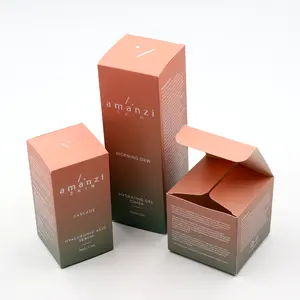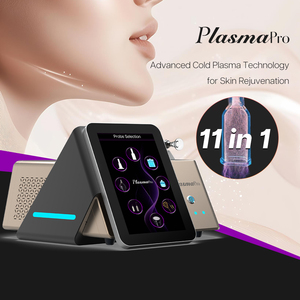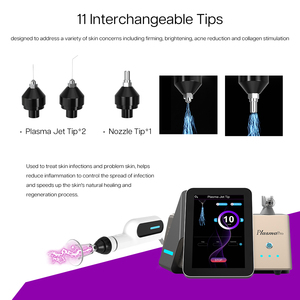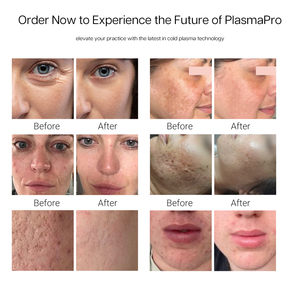
All categories
Featured selections
Trade Assurance
Buyer Central
Help Center
Get the app
Become a supplier

(11906 products available)




















































Cosmetic containers are used to store different kinds of cosmetics. They come in many designs and materials, optimizing them for specific types of cosmetics. Below are the most common types of cosmetic containers.
Plastic makes for a cheap and light option that's good for liquids such as lotions, shampoos, and conditioners. Pumps, droppers, and sprayers can be fitted into plastic bottles to enhance their use. Another good thing about plastic is that it can be molded into several shapes and sizes. This attribute allows it to be visually attractive while serving its purpose.
Glass jars provide an upscale feel and are usually used for creams, balms, and other thick substances. The airtight seal of glass jars also helps keep the product fresh over time. Despite being heavier and more expensive than plastic, glass jars are preferred for premium cosmetics because of their durability and recyclable property.
Tubes are very useful for products that need to be squeezed out, like lotions, gels, and facial creams. Most tubes are made of plastic but can also be made of metal or laminated materials for better sealing and product longevity. Flip-top or screw-on nozzles are very effective in preventing product wastage and contamination.
Cans are meant for products that need to be sprayed, such as deodorants, leave-in conditioners, and setting sprays. Cans are often made of aluminum or steel, which are suitable for holding propellants. These containers offer a fine mist application, making the product easy to use and evenly distributed.
Pump bottles are ideal for viscous liquids like serums, moisturizers, and liquid foundations. Including a pump dispenser helps minimize product exposure to air and bacteria, increasing the product's longevity. These bottles are quite popular in skincare and makeup due to their ease of use and precise dispensing.
Cosmetic containers just do not stop at being practical; they must also look good in order to attract customers. The way a container is designed can better uphold a brand's philosophy and make a consumer feel the product's worth. Below are various designs of cosmetic containers.
Bare, function-over-form design has become popular because of the new generation's interest in less and the practical appeal of the design. Such designs rarely have any decorations except for simple typography on the container surface. Clear or frosted glass and matte plastic are often used in minimalist cosmetic containers. These materials give a polished look that fits any modern lifestyle. The simple look of minimalist containers helps eliminate extra packaging and keep the environment clean.
Imitating design features of vintage cosmetic containers entails old containers' outlines, patterns, and color schemes. These containers, however, still want their functionality to be modern even though the containers want nothing more than aestheticism. Such designs often use embossed glass with metal caps or other period-style elements that evoke nostalgia. This technique enables the brand to present itself as a classy, sophisticated, and time-tested company.
This container design incorporates eco-friendly materials like biodegradable plastics, bamboo, or recycled metals into the design to emphasize sustainability. Avoiding glue that does not biodegrade in any form or using plant-based inks for printing the paper content are some sanction measures that are employed. They often have a refillable feature to decrease the need for new containers and hence give new life to the old ones.
Geometric shapes introduce a new dynamic to the usual cylindrical and rectangular structures used for containers. These shapes not only make the product stand out on shelves, but they also serve interesting functions. Such designs, made possible with rigid plastics or molded glass, help maximize product quantity and create an eye-catching display. They can also be modular to allow stacking or interchanging, thus beautifying the area where they are fixed.
Creating a custom container allows consumers to personalize their experience. This may involve changeable sleeves, labels that can be written on, or even components of the product that can be changed, such as an inner cream or gel. Initially, it was thought to be a marketing gimmick; then, it was fully recognized for enabling consumers to feel a special bond with the product that was relational and emotional.
The kind of material used to make the cosmetics' container determines how long it will last, how likely it is to get recycled, and, of course, how it looks. Below are the most popular materials for cosmetic containers.
Frosted glass is a favorite for upscale cosmetic line jars and bottles. The frosting provides the container with a sleek, non-shiny look that softens the glass and makes it difficult to notice fingerprints or smudges on its surface. It also limits light penetration and helps keep substances like creams and serums fresh for a longer time. Frosted glass is also 100% recyclable, even though it has a refined look and feel and is angular and rigid, making it good for the eco-conscious consumer.
Skin care containers made of aluminum are known for being strong and impermeable to air, water, and light. Most commonly used in aerosol cans, aluminum can also be shaped into jars and tubes. The material protects the product from contamination, hence making it ideal for lotions and creams with preservatives. Additionally, it can be molded into containers of different thicknesses, increasing design appeal. Aluminum is recyclable and thus reduces the overall waste in the environment.
In making these plastics, natural sources like cornstarch or sugarcane are used to make them biodegradable. They will naturally degrade after being discarded, hence lessening the dangers of pollution emanating from ordinary plastics. The performance of these containers is similar to that of regular plastic, but they offer a more environmentally conscious choice. Sustainable brands use biodegradable plastic for face cosmetic containers to enhance their green messaging.
Bamboo is gaining popularity because it is sustainable, stylish, and strong as a natural resource. It holds a product, keeps contaminants like air and bacteria out, and adds a nice look to the place. Being a form of wood that is rapidly renewable, it meets the requirements of companies that are aiming at green mascots. Cases with bamboo lids or bases are frequently used for cosmetic items to give a rustic and eco-friendly touch.
HDP and other high-over polymers are favorites when designing cosmetic containers, especially cans for skin care and makeup products. The material is strong, lightweight, and impact-resistant. It can easily be molded into any required shape. While not as easy to recycle as metals or glass, high-grade plastics can still be recycled, although they are frequently integrated into products to help reduce their overall environmental impact. These containers are equally durable and nice to look at.
To realize its goal, a cosmetic containers supplier must choose the right containers by focusing on the market's needs and the importance of a strong brand. There are several factors to be considered when choosing cosmetic containers, such as the desired product, target buyers, and the company's development strategy. Below are some considerations that should be made.
The intended fluid medium is one of the most important considerations when choosing a cosmetic container. Different fluids need different types of containers: creams and gels require jars or tubes, while liquids and mists may require bottles or jars. This limitation demands that the product container chosen should be a suitable housing for the cosmetic product in question. Choosing a container that has a compatible inner layer with the product will reduce or eliminate any interaction with the product to preserve its integrity.
Suppliers must consider the sustainability of the materials used to manufacture the containers. There are several eco-friendly options, such as biodegradable plastics, glass, and metals, which would use up fewer resources than ordinary practices. This element is gaining importance among people who are concerned about the environment. Choosing sustainable materials can help the company portray itself as one that cares about the state of the world and its occupants.
The effectiveness and attractiveness of the packaging are equally important considerations. A cosmetic container's inner product functionalities are ensured by the inner light shield; however, the outer cosmetic container design will impact customers more. Using innovative shapes and finishes can accomplish functional goals such as avoiding leaks, providing ease of use, and creating eye-catching displays that sell the product. Attention to the container's visual value can help create a strong brand identity and be memorable to customers.
Cost and manufacturability go hand in hand if a container is to be selected since it should be economically viable. The choice of material and design depends on how the container can be produced at a minimal cost and in large quantities without compromising quality. Suppliers seeking to expand their operations further should look into how scalable their container choices are and what additional costs may be involved in launching new products or variants.
A1: Cz9 containers are designed to hold cosmetic products and are usually ordered in large quantities. Such containers can be plastic bottles, glass jars, metal cans, tubes, or eco-friendly materials. These containers are used by companies to package face makeup products and keep them safe, fresh, and attractive.
A2: While selecting a cosmetic container, these factors should be considered: the container material, inner fluid medium, ecologically friendly and sustainable, effective fluid medium, and cost and manufacturability balance. In so doing, functional, sustainable, and effective cosmetic containers are made that appeal to the target market.
A3: A well-executed design of cosmetic containers is responsible for the first impression it creates and influences the customer's further engagement with the product. It is the container that provides the functional benefits of protection and preservation and sells the product through attractive visuals.
A4: The selection of these containers is by focusing on the demand, the container's practicality and beauty, and its scalability. By achieving this well, a proper balance will be ensured between customer satisfaction and the economic imperative of running a successful business.
A5: Several materials, such as plastics, glass, metals, biodegradable substances, and bamboo, are used to manufacture cosmetics containers. Each material has unique qualities that can make it lighter and stronger and more sustainable than the current materials in use.